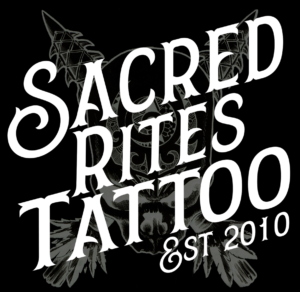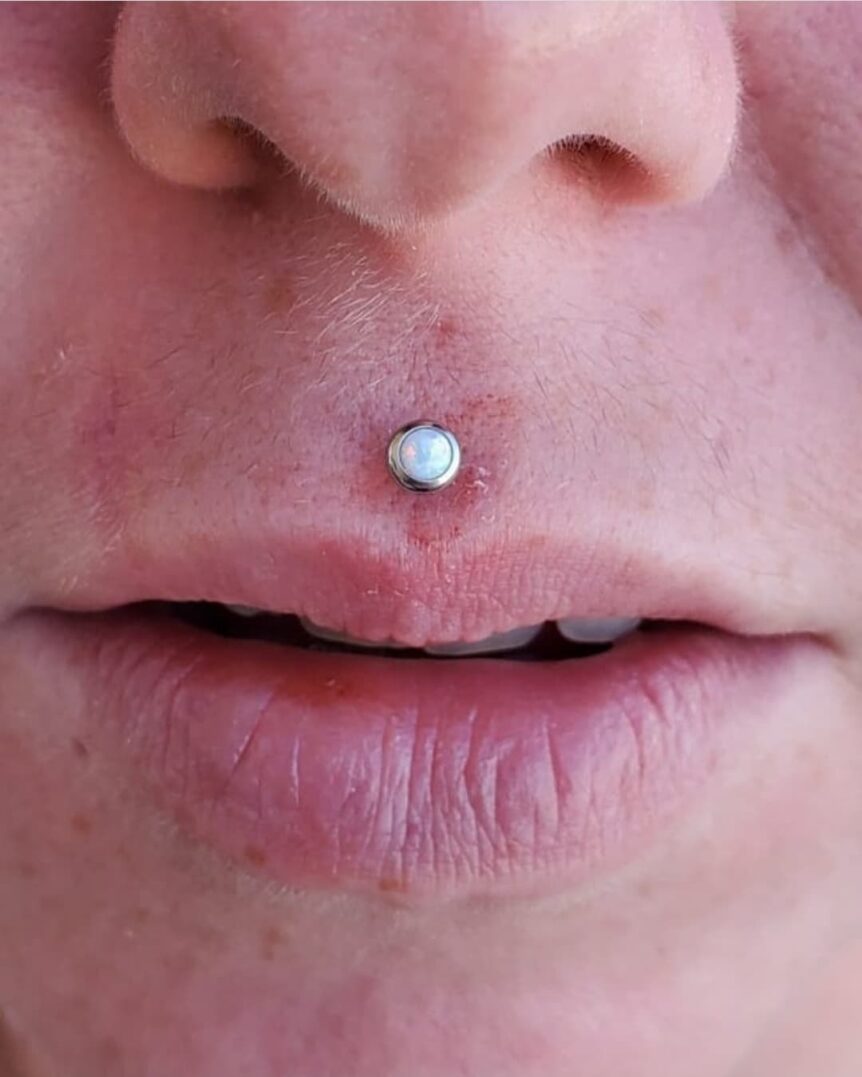Oral piercings are one of the most common piercings we do in the piercing industry.
One of the more frequent questions we get in the industry is, “will my lip/tongue piercing, etc. damage my teeth and/or gums?” Well. There is no simple answer. Any oral piercing carries some level of concern when it comes to risk. This blog will focus on the risks, precautions and all the things you can do to minimize any possible damage.
Hygiene:
First and most importantly, let’s talk about hygiene. If you don’t take care of your teeth and gums, the cards are already stacked against you. The human mouth is a breeding ground for bacteria. Any step you take towards good oral health will benefit the healing and longevity of your piercings.
The important thing to remember is that advice from your dentist and advice from your piercer will differ. Most dentists are anti piercing. If your dentist is a little more understanding, then life can be much easier.
We highly suggest using alcohol free rinsing products. You will want to avoid any product with whitening chemicals. Electric tooth brushes have taken the world by storm and again we recommend them! They will aid in removing plaque off your piercings. Yes, you should be brushing your piercings too! Regular cleanings from your dentist can also aid in keeping everything in your mouth healthy and squeaky clean.
Proper Jewelry:
Regardless of aftercare, personal hygiene or anything else, we will discuss proper fitting jewelry is absolutely crucial. Typically, with any fresh oral piercings you will be pierced with a larger than average length of jewelry to allow room for the swelling. We always recommend coming back in after a small period to swap out your jewelry for something that fits snug. You will be at the greatest risk for damage to your teeth and gums during the healing process because of the excessively long jewelry. Biting the jewelry or catching it on your teeth is very common. That being said, there is still risk even with proper fitting jewelry, but it’s drastically decreased.
Playing with your jewelry:
You won’t go blind if you play with it too much despite what your mom told you, but it can be an issue to your oral health. Accidents happen but the most common cause for concern are those who simply can’t stop excessively playing with their jewelry. When the jewelry is down sized and it’s not as loose the urge will decrease but for some, they can’t control themselves. Resisting this urge will greatly reduce the risk of you chipping your teeth or messing up your gums.
Labret Piercings:
The biggest concern with any labret piercings is rubbing along the gum line. Chipping of the teeth and biting on this jewelry is a risk during the healing process but, with snug fitting proper jewelry this is a low risk piercing as long as the placement is proper. Nesting is super important with oral piercings. If you’re unfamiliar with that process we did a blog about it. You can read all about it here. Nesting. | Sacred Rites Tattoo
Labret studs are recommended, but if you like the look of a hoop, we highly recommend a clicker or a seamless ring. A proper fitting hoop will keep you from playing with it and snagging it on anything random. Captive bead rings can work well too but that little ball tends to make people want to play with their jewelry even more by moving it in and out repeatedly.
Philtrum/Monroe Piercings:
These basically fall into the same category as a basic labret piercing. The biggest concern here is biting/playing with your jewelry. It is really crucial again to have properly fitted jewelry after the healing process. Placement is also of the upmost importance. Wearing rings in these isn’t common but some people like the look. If you that’s the path you chose you absolutely need to make sure the jewelry is properly fitted by a professional. They will need to be monitored for irritation. Wearing a ring in these particular areas will drastically increase the chance of something going wrong. So as cute as it may look, we recommend wearing a labret stud.
Dahlia Piercings:
If you’re not familiar with these they are a cross between a labret and a cheek piercing. They are a little more difficult to heal than a labret but not nearly as difficult as a standard cheek piercing. Labret studs are kind of a must. We do not recommend wearing any style of hoop in these. Length of the jewelry on these can be finicky even when healed because there are different factors than cause irritation and require the jewelry to be swapped out to allow for irritation. One of the challenging things for this particular piercing can be the backings. Micro labrets or discs or sometimes even small balls can be more comfortable depending on your preferences. These pose little threat to your teeth and gums with proper placement and jewelry.
Cheek Piercings:
Cheek piercings are a living nightmare. Yep, we said it.
Be prepared to spend a lot of time and money over the course of these piercings. Much like dahlia piercings you really have no choice but to wear a labret style or a barbell. Backings again will differ on client anatomy and personal comfort. There are so many factors that can affect these piercings staying happy. Climate, lifestyle, weight loss/gain, moving to a new city even. They are VERY finicky. So long as the jewelry is snug, there is minimal risk to your oral health, but your mental health sure as hell may suffer. When we say they are a nightmare, we mean it.
Tongue Piercings:
We mentioned earlier that playing with your piercings is a no-no. This particular piercing is a glowing example. It’s easy to avoid damage if you are cautious and wear proper fitting jewelry. That being said if you are clacking it against your teeth and constantly slamming it around your mouth, you run the risk of breaking a tooth. Plaque build up is VERY common for this particular piercing. You will need to actively brush the jewelry frequently. Top and bottom! If there is stubborn plaque, we recommend an electric tooth brush or a water pik.
Smiley Piercings:
These piercings are very hit or miss. We recommend you steer away from them in general. The migration and rejection rate are very high. Every time you talk, eat or move your mouth in general this piercing is moving around. It sits literally on the gum line so there is a good chance it’s going to damage your gums and teeth. If you’re aware of all the risks and still want this piercing we recommend snug simple and smooth jewelry as it’s the most reasonable option and will help prevent damage as much as possible.
Tongue Frenulum Piercings:
This piercing falls into the same category as the one above. The bigger concern with these is they are extremely hard to keep clean in terms of plaque. It’s a difficult area to clean with a tooth brush and removing the jewelry yourself to clean is not easy. Excessive plaque buildup can cause bacterial issues and bad breath!
Inverse Vertical Labret Piercings:
Odds are you’ve only heard to this referred to as an Ashley piercing. They are similar to labrets but they are a tougher piercing to heal. Labrets are often worn on to help aid in the healing. This is another piercing where nesting becomes important to the general comfort and longevity of the piercing. It will drastically reduce the chance of any damage to your teeth or gums. These piercings are often ignored when it comes to cleaning the inside because of the placement but staying on top of that pesky plaque buildup is important!
Vertical Labrets and Vertical Philtrums:
These piercings are a great way to cheat the process. They are an oral piercing but the placement makes it so they have little to no risk to any damage to your teeth and gums! They still need to be kept clean but you can rest assured your dentist will appreciate these beauties!
Horizontal tongue piercing:
These go by many different slang names. Frog eyes, snake eyes, etc. This is a piercing we don’t offer and really do not recommend at all. If you want to damage your teeth this is a piercing that will do it. It can damage your tongue; it will most certainly damage your teeth. There are a huge variety of problems that can come from this. They look adorable but you very rarely see the after math. Nothing about this particular piercing is a good idea!!!
Any piercing you decide on comes with its risks but it’s always best to be educated before you decide on what’s best for you! As always if you have any questions at all feel free to reach out to the studio!!!

